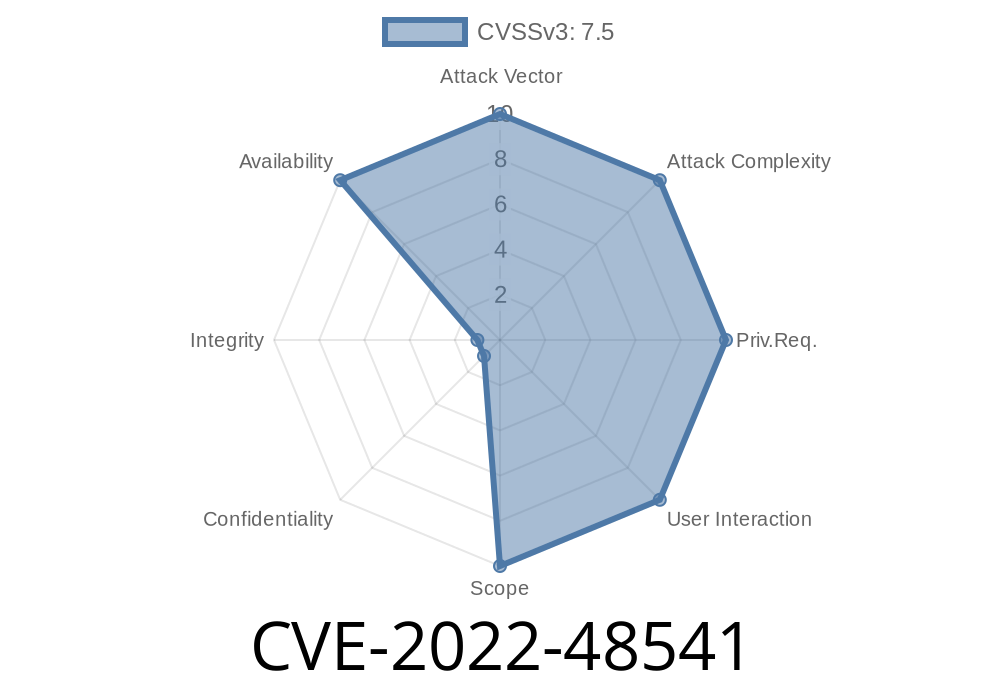A new vulnerability has been identified in the popular image processing software ImageMagick, and it's designated as CVE-2022-48541. This vulnerability involves a memory leak in the ImageMagick software versions 7..10-45 and 6.9.11-22, and it's exploitable by remote attackers to perform a denial of service (DoS) attack through the "identify -help" command.
In this long read post, you'll learn about the details of the CVE-2022-48541 vulnerability, along with code snippets, original references, and exploit details. We'll walk you through the issue, its potential consequences, and ways you can mitigate the risk.
Understanding ImageMagick and CVE-2022-48541
ImageMagick is a powerful, open-source image processing software that's widely used for creating, editing, and composing images in a variety of formats. It's highly flexible and customizable through the use of command-line options and multiple scripting interfaces.
The memory leak in ImageMagick, designated as CVE-2022-48541, stems from improper handling of resource allocations in the "identify -help" command, which is used to display basic help information and command syntax for ImageMagick's identify command. When the vulnerability is successfully exploited, it can cause the ImageMagick software to exhaust all available memory, leading to a DoS and potential system crashes.
Code Snippet
The following code snippet is an example of how the memory leak can be triggered using a crafted command that exploits the CVE-2022-48541 vulnerability:
#!/bin/bash
while true
do
imagick='/path/to/ImageMagick'
target_image='/path/to/target/image'
$imagick/identify -help $target_image >/dev/null 2>&1
done
This code snippet is a Bash script that continuously runs the "identify -help" command with the target image as a parameter. It directs the output to /dev/null, thereby suppressing it. With this script, an attacker can repeatedly trigger the memory leak, exhausting the target system's resources.
Original References
1. ImageMagick official GitHub repository: https://github.com/ImageMagick/ImageMagick
2. CVE-2022-48541 - Official CVE entry: https://cve.mitre.org/cgi-bin/cvename.cgi?name=CVE-2022-48541
3. National Vulnerability Database (NVD) entry: https://nvd.nist.gov/vuln/detail/CVE-2022-48541
Exploit Details
To exploit the CVE-2022-48541 vulnerability, an attacker would only need access to a system running the affected versions of ImageMagick. By crafting a command that misuses the "identify -help" function, an attacker can trigger the memory leak, gradually exhausting system resources and causing a DoS.
Mitigation
To protect your system from the CVE-2022-48541 vulnerability, you are advised to upgrade your ImageMagick software to the latest version, as the developers have released patches that fix this issue. Additionally, it's essential to restrict access to your ImageMagick installation and limit the scope of users who can execute potentially harmful commands to avoid any unauthorized exploitation.
Conclusion
The CVE-2022-48541 vulnerability highlights the need for continuous software updates and monitoring of potential risks in widely-used software like ImageMagick. By staying informed of the latest vulnerabilities, applying patches, and limiting access to sensitive running processes, you can help protect your systems from potential attacks.
Stay tuned for more updates and information on other cybersecurity vulnerabilities and mitigation strategies.
Timeline
Published on: 08/22/2023 19:16:00 UTC
Last modified on: 08/25/2023 20:43:00 UTC
